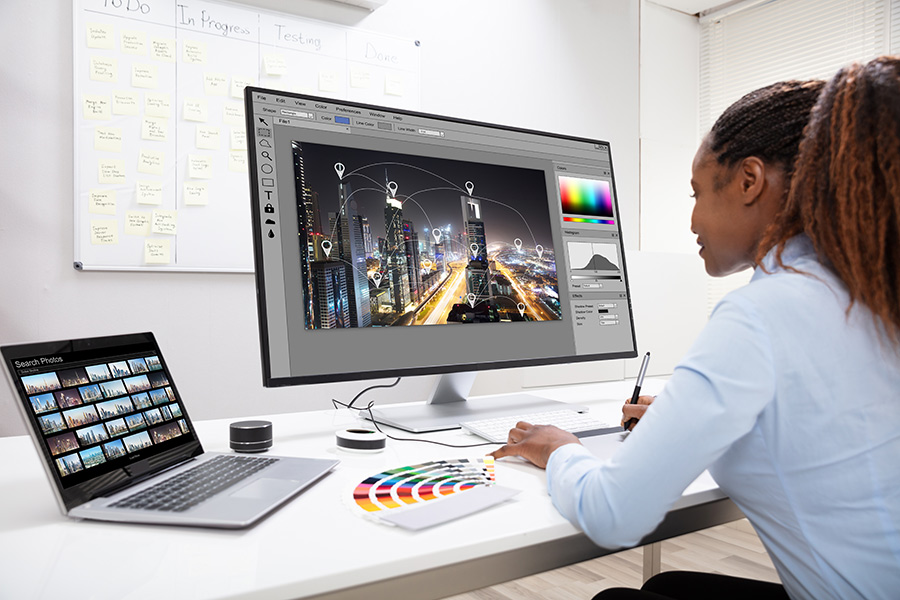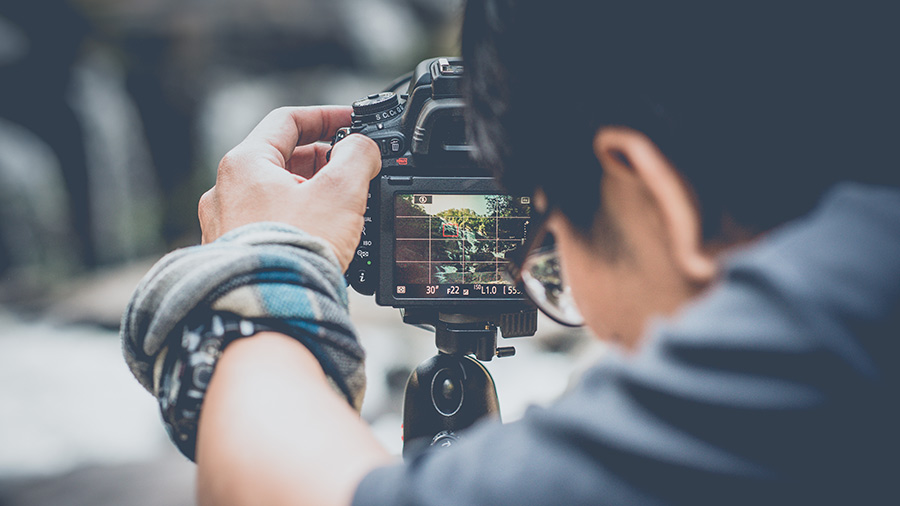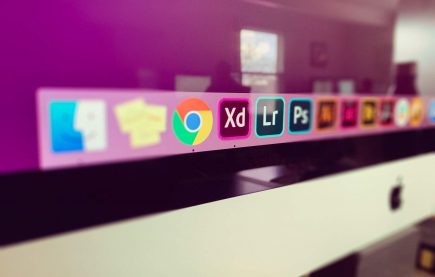
Stock Photos vs. Original Photos: What to Use for Your Website
Competing with 10, 20, or 100 websites is hard on its own, but when you’re competing with billions of websites, the challenge is magnified. Businesses worldwide are constantly creating high-quality content to ensure that their website ranks better on the search engine. However, content doesn’t necessarily mean writing a few headlines and adding them to your website. It is a series of steps, including finding the relevant topics, keywords, domain, and tone, and—just as important—choosing the right images.
To offer the best user experience, businesses must incorporate visuals in their online content if they’re looking to substantially increase their website traffic.
Why Are Images an Important Part of Content?
Adding relevant pictures and other visuals to your B2B website has plenty of perks. Below, we’ve compiled a list of benefits you get when you add visuals to your content.
1. Aesthetically Pleasing
Who doesn’t like pretty things? Many people are attracted to a website just because of the images—so much so that many websites rely mostly on images as communication tools. This is generally seen in B2C websites; however, B2B websites can benefit from this as well. Images you pick for your website help you lift the look of its content and online brand, reshaping it into something stunning that grabs users’ attention.
2. Increased User Comprehension
A simple image can take lengthy content and transform it into something that better supports your messaging. Readers can understand your business better through visuals that match the website’s voice and words. So if someone doesn’t have enough time to read the whole article, they can skim through the images and still get the gist of your webpage.
3. Better SEO Results
Most businesses leverage search engine optimization (SEO) on their websites to improve their long-term ranking on the search engine results pages (SERPs). Adding images is a great way to reduce bounce rates and increase engagement. This directly impacts the quality and strength of SEO you’re trying to achieve for your content, as Google considers user experience to be a key metric in SERP rankings. Furthermore, when images are correctly optimized, users can discover them in Google Search and Google Images.
Stock Images vs. Original Photos
Now that we understand the main benefits of visuals on your website, the next question is “Where do I source my images from?” The two main sources of images in the modern internet are stock images (images that are royalty-free and pre-made) and original images (images that are custom made by a professional.) So what are the differences between these two approaches, and what are the benefits of each?
Stock Images

Stock images are pre-designed or pre-captured images. While the majority of stock photos are royalty-free, you may need to pay for specific images depending on the creator or website through which you’re acquiring them. Stock photo agencies such as iStock, Shutterstock, and Adobe Stock offer these images in several sizes and in a variety of categories so you can pick something suitable for your B2B website.
Perks of Using Stock Photos
People buy stock photos for the following reasons:
1. Budget-Friendly
Stock photos are a great option if you’re on a budget. Many stock image websites are competitively priced and often give discounts if you become a member. There are even some websites that have a more limited offering of photos for free, though the quality of these photos might vary depending on your source. If you’re a bit low on funds to hire a professional photographer or designer, then picking something from the stock will help get you the most bang for your buck.
2. Diverse
Another great advantage of using stock images is the diversity of options. Is your business related to food? Or are you looking for images that are more abstract? There’s something to match each type of content. This diverse range makes it convenient for content creators to find a suitable fit for their needs. This is especially true for B2B websites, as you may be trying to reach a broad range of customer types and industries.
3. Time-Saving
If your business needs to create content on the go, time might be a big issue. While custom images will often give you better quality, hiring a photographer for every blog post you add to your site would be a significant time sink. Using stock photos is a terrific option if turnaround times are tight or you’re posting content on a regular basis.
4. Resolution
Resizing an image has the potential to not only destroy its pixel quality but also stretch it to unwanted dimensions if not handled carefully. When you buy affordable stock images, you can often download photos at large sizes. This helps in the image optimization process, allowing you to scale down images more accurately. On top of this, if you need to use the same image in print and online, you’ll have a higher-resolution version that can be easily converted for the printing process.
On the Flip Side
Every good thing has at least one downside.
The most common shortcoming of using stock photos is a lack of originality. Since anyone can use stock photos on these conveniently accessible websites, there is a considerable chance that the pictures you use are already a popular subject of someone else’s B2B website. You may also run into the issue that a photo is close but not quite right for your needs, which can be frustrating.
Furthermore, you may need to pay to obtain licenses for different stock uses. Some images may only be slated for editorial uses or have restrictions on distribution for e-commerce or packaging. Read a website’s terms of use carefully to understand where you can—and where you cannot—use its images.
Original Photos

As their name suggests, original photos are owned, designed, edited, and, in most cases, even taken/created by you or a professional. Whether you’re snapping shots from your camera or using the services of a marketing department, photographer, or designer, original photos are certainly a popular choice among bloggers and businesses. Authentic images can be taken by a professional photographer and edited accordingly. You can also take high-quality photos all by yourself and produce something to complement your business’s theme or niche.
Perks of Using Original Photos
Using original photos gives an edge to businesses that have a presence online in the form of websites. Here are a few of those perks.
1. Originality
The first and foremost thing that makes original photos shine is their originality. It’s 2022, and these days, being genuine, confident, and showing your true colors is a significant advantage in the online world. Additionally, people want to see content they can relate to. So having genuine, relatable photos gives users the impression of consideration tailored to their personal interests.
2. Flexibility
When taking pictures yourself, the proper editing, poses, and theme are entirely in your hands, giving you the power to choose exactly how you want your final images to look. Original photos bring a layer of flexibility to your photos so your ideas and personality shine through. Working with a professional artist or a company? You can use their skills to help translate your vision into reality in a high-quality way.
3. Control
While you can show the true essence of your business’s ideology with original photos, they also give you control and authority over those images. Since they’re not being sourced from a photo stock, you have every right to copyright the images or, in extreme cases, even sue a person who uses them without your permission. This also ensures that you haven’t used the same image as a competitor—or, in many cases, a completely different kind of business—has used.
4. Flexible Licensing Fees
Some stock photos come with a licensing fee that may be hundreds of dollars. This is potentially cost-prohibitive for people who live in regions with high exchange rates. Using an original photo allows your business to negotiate or—in some cases—avoid extended licensing fees when it comes to distribution of products or where the image is used.
On the Flip Side
Original photos also come with a few disadvantages, which is why people are hesitant to use them.
While originality is a significant advantage, most people don’t have the necessary equipment to take high-quality photos. For instance, if your content revolves around abstract items, then creating an image might be challenging. Some content creators lack the space to take perfect photos for their blogs. This may prevent them from capturing first-rate visuals.
Unlike stock photo content, original images require more professional skill to achieve the desired results, meaning you may need to hire an outside professional. This can be expensive and time-intensive.
Stock vs. Original—Final Verdict
Adding images to content is a requirement in this day and age, but the type of image you choose depends on your personal preferences. Both stock and original photos enhance the quality of your content and ensure you get increased traffic on B2B websites. However, stock photos lack a personal touch that you can add to your website by publishing original images.
Lform’s professional recommendation is to use the strengths of each type of photo correctly. While blog articles and internal content might be quick and cheap to turn around with stock photos, for more branded images (such as staff portraits or product images), you’ll need to hire a professional photographer or designer.
Whatever your choice, once you have a good stack of visuals ready, give Lform a call so we can discuss how to get your visuals into a well-crafted, custom B2B website.



